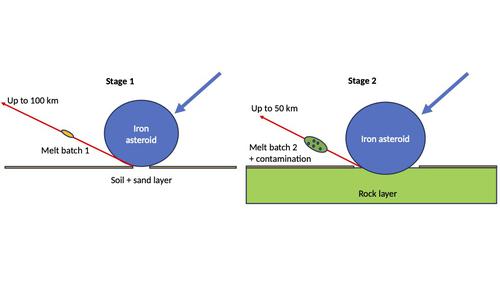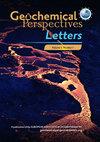阿塔卡马沙漠撞击玻璃散落区的两阶段撞击熔化过程
IF 3.7
1区 地球科学
Q1 GEOCHEMISTRY & GEOPHYSICS
引用次数: 0
摘要
我们发现了一种新型富含二氧化硅的玻璃,与已知的阿塔卡马沙漠撞击玻璃散落区有关。根据岩相学、化学成分和难以区分的 40Ar/39Ar 形成年龄(约 6.6 Ma),我们推断这两种玻璃是由同一撞击事件产生的,该撞击事件又相继产生了两批成分不同的熔体。第一批是富含二氧化硅的熔体,来自石英砂和风化岩浆岩的混合物。这批熔体已被还原,没有地外污染。第二种熔融物的数量要多得多,与正常玻璃相对应,它被氧化,受到铁型撞击物的高度污染,来自下层未风化的达西特岩。这一方案为地球表面与大型金属小行星之间的第一秒互动提供了新的线索。本文章由计算机程序翻译,如有差异,请以英文原文为准。

A two stage impact melting process in an impact glass strewn field from the Atacama Desert
A new type of silica-rich glass has been discovered associated with the known impact glass strewn field of the Atacama Desert. Based on petrography, chemical composition and indistinguishable 40Ar/39Ar formation ages at circa 6.6 Ma, we infer that these two glasses were produced by the same impact event, which gave rise to two successive compositionally different melt batches in close succession. The first one is a silica-rich melt derived from a mixture of quartz sand and weathered magmatic rocks. It is reduced and devoid of extraterrestrial contamination. The second one, much more abundant and which corresponds to the normal glass, is oxidised, highly contaminated by the iron type impactor and derived from an underlying unweathered dacitic rock. This scheme sheds a new light on the first second of the interaction between the Earth surface and a large metallic asteroid.
求助全文
通过发布文献求助,成功后即可免费获取论文全文。
去求助
来源期刊

Geochemical Perspectives Letters
Earth and Planetary Sciences-Geochemistry and Petrology
CiteScore
7.00
自引率
2.00%
发文量
42
审稿时长
15 weeks
期刊介绍:
Geochemical Perspectives Letters is an open access, internationally peer-reviewed journal of the European Association of Geochemistry (EAG) that publishes short, highest-quality articles spanning geochemical sciences. The journal aims at rapid publication of the most novel research in geochemistry with a focus on outstanding quality, international importance, originality, and stimulating new developments across the vast array of geochemical disciplines.
 求助内容:
求助内容: 应助结果提醒方式:
应助结果提醒方式:


